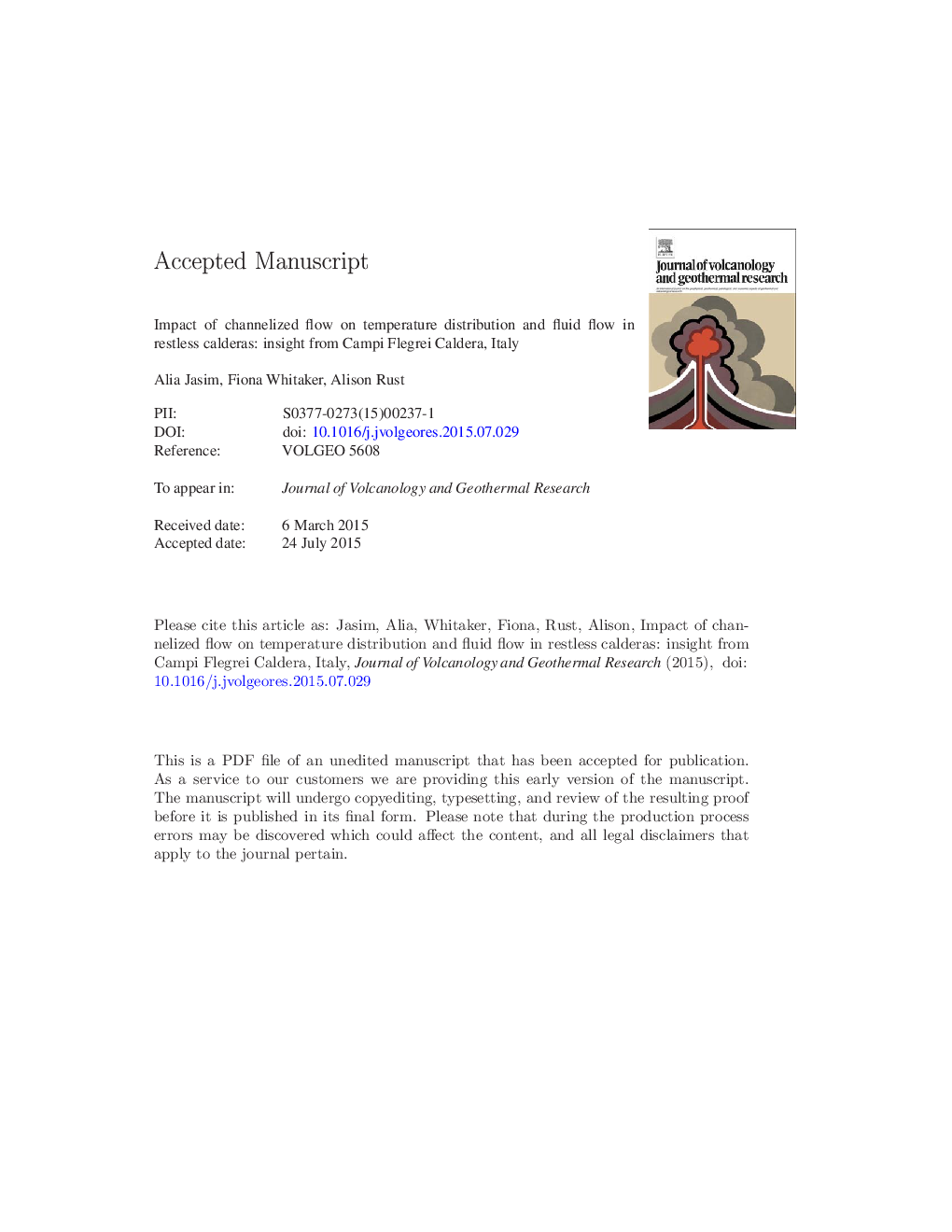| Article ID | Journal | Published Year | Pages | File Type |
|---|---|---|---|---|
| 6439891 | Journal of Volcanology and Geothermal Research | 2015 | 50 Pages |
Abstract
Using a series of numerical groundwater models run with TOUGH2, we simulate the coupled groundwater-magmatic system at Campi Flegrei caldera, with particular emphasis on the impact of permeability developed within local fault systems and the dynamics of the system during magmatic unrest. Simulation results suggest that faults can play an important role in controlling the dynamics of recharge and heat transport within the shallow hydrothermal reservoir. Results specifically highlight that contrasts in permeability between faults and surrounding rock impact local temperature gradients, with faults either acting as preferential routes for recharge or discharge of groundwater, depending on fault/caldera fill permeability contrast and the vertical extent of the fault. Simulations of magmatic unrest with a step-wise increase in basal heat flux suggest that periodic geophysical and chemical signals may stem from the interaction between the development of gas at depth and the recharge-discharge dynamics of the reservoir. These results highlight the potential for the dynamics of magmatic-hydrothermal systems to be significantly impacted by the presence and nature of local fault systems. Where dynamic groundwater systems are involved, it is thus important to understand the impact of such geological elements when interpreting monitoring data such as ground deformation, seismicity and gas emissions.
Related Topics
Physical Sciences and Engineering
Earth and Planetary Sciences
Geochemistry and Petrology
Authors
Alia Jasim, Fiona F. Whitaker, Alison C. Rust,
